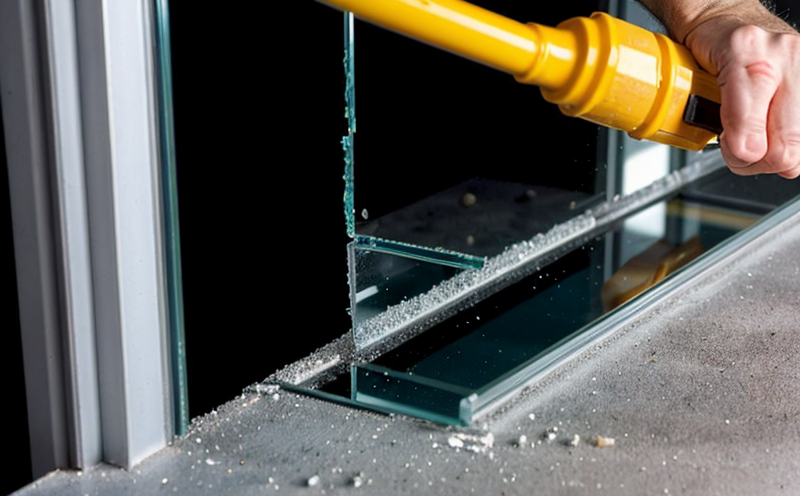Testing for cracks or fractures in glass as a result of thermal shock or rapid temperature changes.
The Crucial Role of Thermal Shock Testing Ensuring Glass Integrity in a Rapidly Changing World
As the world becomes increasingly dependent on glass products, from industrial equipment to architectural features, the risk of thermal shock-induced cracks and fractures grows exponentially. Sudden changes in temperature can cause even the most robust glass materials to shatter or crack, leading to costly downtime, safety concerns, and reputational damage. This is where Eurolabs Thermal Shock Testing service comes into play a vital laboratory testing service designed to identify potential weaknesses in glass products before they become major issues.
In this article, well delve into the importance of thermal shock testing, its benefits, and how our team at Eurolab can help businesses safeguard their assets against temperature-related damage.
What is Thermal Shock Testing?
Thermal shock testing involves subjecting a glass sample to extreme temperature fluctuations to assess its ability to withstand sudden changes in temperature. This simulated environment replicates real-world scenarios where glass products may be exposed to rapid temperature variations, such as when moving from a cold storage facility to a hot manufacturing area or when subjected to external weather conditions.
Why is Thermal Shock Testing Essential for Businesses?
The consequences of thermal shock-induced cracks and fractures can be far-reaching
Product Failure Glass products with hidden weaknesses may fail catastrophically, resulting in costly repairs or replacements.
Safety Risks Cracked or fractured glass can pose a significant safety hazard to personnel, customers, or the general public.
Reputational Damage Companies that fail to address thermal shock-related issues may suffer from reputational damage, leading to lost business and revenue.
Advantages of Using Thermal Shock Testing
Our Eurolab team is committed to helping businesses protect their assets against thermal shock-induced damage. Here are the key benefits of our testing services
Early Detection Identify potential weaknesses in glass products before they become major issues.
Cost Savings Prevent costly downtime, repairs, and replacements by detecting temperature-related damage early on.
Enhanced Safety Safeguard personnel, customers, or the general public from safety risks associated with cracked or fractured glass.
Improved Product Reliability Develop products that can withstand extreme temperature fluctuations, ensuring consistency and reliability.
How Does Eurolabs Thermal Shock Testing Service Work?
Our team of experts follows a rigorous testing protocol to ensure accurate results
Sample Preparation Glass samples are carefully prepared for testing, taking into account the specific requirements of the product.
Temperature Exposure The glass sample is subjected to extreme temperature fluctuations, replicating real-world scenarios.
Monitoring and Analysis Our team continuously monitors the samples behavior during the test, analyzing data to determine the presence of cracks or fractures.
Frequently Asked Questions (FAQs)
We understand that you may have questions about our thermal shock testing service. Here are some answers to common inquiries
Q What types of glass products can be tested?
A Our Eurolab team can test a wide range of glass products, including but not limited to architectural glass, laboratory glassware, industrial equipment, and more.
Q How long does the testing process take?
A The duration of our thermal shock testing service varies depending on the complexity of the product and the desired level of accuracy. Typically, results are available within 1-5 working days.
Q Can Eurolab provide certificates or reports for regulatory compliance purposes?
A Yes, we can provide comprehensive certificates and reports that meet industry standards, ensuring our clients compliance with regulations.
Conclusion
In conclusion, thermal shock testing is a crucial laboratory service provided by Eurolab to help businesses safeguard their assets against temperature-related damage. By identifying potential weaknesses in glass products early on, companies can prevent costly downtime, safety risks, and reputational damage. Our team of experts at Eurolab is committed to delivering accurate results, ensuring that our clients products meet the highest standards of quality and reliability.
Take the first step towards protecting your business against thermal shock-induced damage by contacting us today to learn more about our comprehensive testing services.
-
Testing lighting devices for resistance to glass breakage under various conditions.
-
Evaluating the durability and toughness of glass used in lighting devices, such as bulbs and fixtures.
-
Testing for breakage due to mechanical shock, impact, or stress.
-
Simulating scenarios where lighting devices are dropped or subjected to external forces.
-
Assessing the performance of glass components, such as lampshades or covers, when exposed to impacts.
-
Verifying compliance with safety standards for lighting devices with glass components (e.g., UL 8750).
-
Testing the fragility of glass used in outdoor lighting devices, especially for street lamps and floodlights.
-
Assessing the structural integrity of glass under extreme weather conditions such as hail or heavy winds.
-
Testing for breakage or deformation of glass components in safety-critical lighting systems, such as emergency lights.
-
Evaluating the safety of glass in lighting devices to ensure it does not pose a hazard if broken.
-
Testing the resistance of glass in light bulbs to vibration, handling, and transportation.
-
Verifying that lighting systems with glass components are safe for use in public areas where breakage could be dangerous.
-
Assessing the impact of glass breakage on the overall functionality of the lighting system.
-
Testing for the sharpness of broken glass edges to reduce the risk of injury.
-
Verifying the integrity of glass in sealed lighting systems, preventing moisture or dirt ingress.
-
Assessing how glass breakage affects the light output or performance of the device.
-
Testing for glass breakage resistance in energy-efficient lighting systems like LEDs.
-
Verifying the robustness of glass components in decorative or architectural lighting.
-
Evaluating the use of alternative materials like plastic or polycarbonate in place of glass for breakage resistance.
-
Testing for ease of glass replacement or repair in lighting fixtures.
-
Ensuring that the lighting device's glass does not shatter into dangerous fragments when impacted.




